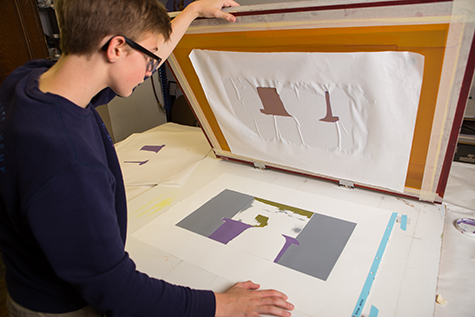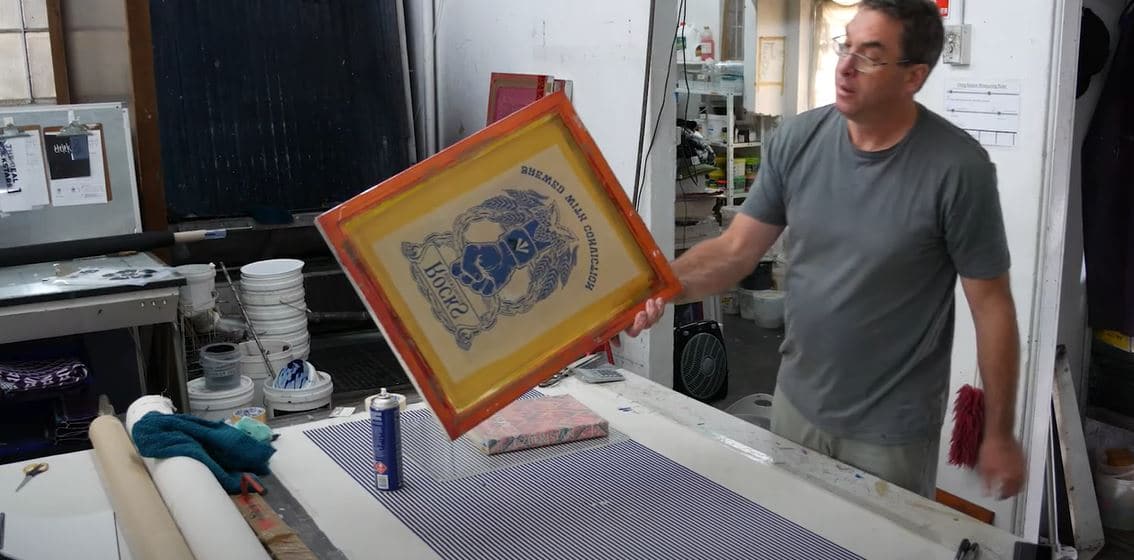The Important Guide to Comprehending Screen Printing and Its Versatile Utilizes
Screen printing has a rich history that dates back to ancient times, advancing into a sophisticated method made use of across various sectors today. This overview discovers the ins and outs of the screen printing process, outlining its applications in advertising and marketing, fashion, and home décor - 10:9 Design Screen Printing Texas. Comprehending these principles can open innovative potential for both commercial and imaginative tasks. The complying with sections will certainly disclose necessary suggestions and methods to boost one's screen printing ventures
The History of Screen Printing
Screen printing has origins that map back centuries, its development mirrors the imaginative and technical developments of various cultures. Coming from ancient China, the technique was at first used for embellishing textiles and later spread to Japan, where it became indispensable to Ukiyo-e woodblock printing. The method shifted to Europe in the 18th century, where it obtained popularity among craftsmens and industrial printers. The innovation of picture solution in the 20th century revolutionized screen printing, enabling even more complex designs and greater effectiveness. Musicians like Andy Warhol better propelled its popularity, making use of the tool to create legendary works that mixed commercialism and art. By the late 20th century, screen printing had established itself as a flexible method, used in vogue, advertising and marketing, and art. Today, it continues to progress, integrating electronic modern technology and broadening its applications across different markets.
The Screen Printing Refine Explained
Screen printing changes creative visions into concrete designs with a series of specific actions. A photo is produced and then transferred onto a screen, generally made of great mesh material extended over a framework. A light-sensitive solution is related to the screen, which is revealed to light, hardening in locations not covered by the photo. After washing out the unhardened emulsion, a pattern is developed.
Next, the screen is placed over the substrate, whether it be textile, paper, or one more product. Ink is after that pushed via the open areas of the pattern utilizing a squeegee, depositing the design onto the substratum below. This process can be duplicated for multiple colors, calling for different screens for each hue. The published item is healed utilizing heat to ensure the ink adheres properly, resulting in a resilient, vibrant layout all set for usage.
Kinds Of Screen Printing Techniques

In addition, specialized strategies, such as discharge screen printing, eliminate color from the material to develop softer prints, while aluminum foil screen printing applies metallic foil to attain a shiny finish (10:9 Design near me). Each strategy provides distinct attributes, accommodating different creative requirements and production ranges, eventually expanding the possibilities within the screen printing domain name
Applications of Screen Printing in Various Industries

Additionally, the signage and marketing industries use screen printing for producing attractive screens and banners. This technique allows for bold colors and intricate styles that record attention. In electronics, screen printing is utilized for using conductive inks to circuit boards, important for element links. The home design industry welcomes screen printing to produce distinctive designs on fabrics and wall surface art. Generally, screen printing acts as a critical device throughout diverse fields, enhancing products with individualized and cardboard sign printing aesthetically attractive graphics.
Tips for Effective Screen Printing Projects
While undertaking a screen printing job, careful focus to detail can considerably boost the last outcome. Selecting high-quality products is important; this includes the screen, inks, and substratums. Using ideal mesh counts can impact ink deposition and detail resolution. Prep work is similarly essential; extensive cleaning of screens and proper exposure times assure crisp prints.
Next, accurate registration is critical for multi-color prints. Making use of placement tools can aid achieve precise layering. Additionally, testing prints on scrap products prior to manufacturing helps recognize prospective issues without throwing away sources.

Often Asked Concerns
What Materials Are Best for Screen Printing on Material?
Cotton and polyester blends are optimal for screen printing on material due to their toughness and ink absorption. Furthermore, specialty materials like silk or canvas can create unique appearances and surfaces, enhancing the general design top quality.
Exactly how Do I Tidy and Maintain Screen Printing Equipment?
To maintain and clean up screen printing devices, one need to routinely wash screens with suitable solvents, check squeegees for wear, oil moving parts, and shop all products in a dry, dust-free setting to prolong their life-span.
What Are the Ecological Impacts of Screen Printing?
Screen printing can have significant environmental impacts, consisting of chemical waste from solvents and inks, water usage throughout cleansing processes, and energy usage. Sustainable methods and green products are vital for lessening these adverse results.
Can Screen Printing Be Done at Home Successfully?
Screen printing can be successfully done at home with the ideal materials and techniques. Enthusiasts can produce top quality prints, though success relies on their ability level, equipment, and understanding of the procedure involved.
What Are the Expenses Associated With Beginning a Display Printing Organization?

Starting a screen printing company entails costs for equipment, materials, and workspace. Initial expenses usually range from a couple of hundred to several thousand find here bucks, depending on the scale, top quality of machinery, and wanted manufacturing capability.
Screen printing has a rich history that dates back to ancient times, developing into an advanced technique made use of across different industries today. One more technique, rotary screen printing, utilizes round screens, assisting in continuous printing on material rolls, thus improving efficiency for large productions. Additionally, specialty strategies, such as discharge screen printing, get rid of color from the textile to develop softer prints, while aluminum foil screen printing applies metal aluminum foil to accomplish a glossy surface. In the fashion market, screen printing is commonly made use of to produce lively designs on clothing, allowing brand names to showcase their unique styles. Cotton and polyester blends are perfect for screen printing on textile due to their longevity and ink absorption.